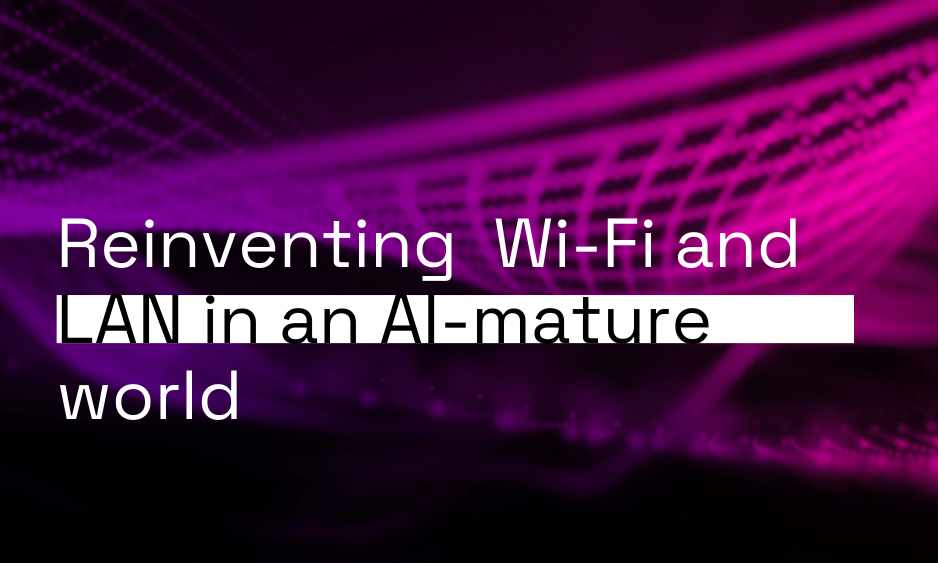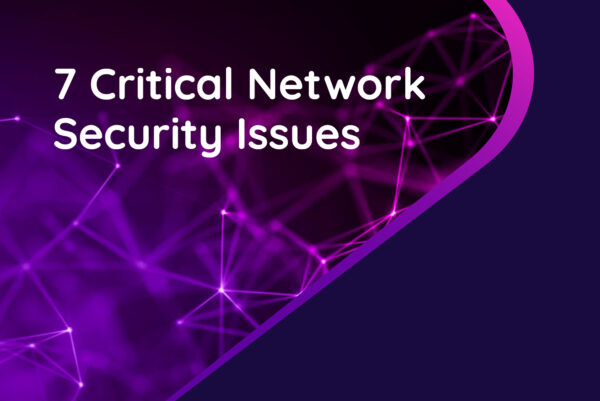Traditional Wi-Fi and LAN systems were once sufficient when our primary digital activity was sending emails. However, as our reliance on connected devices, cloud applications, and real-time communication has skyrocketed, these legacy networks have struggled to keep pace.
Imagine a network that doesn’t just passively shuttle data back and forth but one that actively makes decisions, anticipates problems, and adapts in real time. Welcome to the world of AI-native networks, where Wi-Fi and LAN technologies are transformed into intelligent systems capable of providing seamless, reliable connectivity across any device, anywhere.
The intrinsic qualities of AI-native networks
AI-native networks are built with artificial intelligence at their core, rather than AI being bolted onto or replacing existing systems. This means that most, if not all, components use AI to perform its tasks.
There are key characteristics that define these networks: perceptive, cognitive, and interactive.
Perceptive networks are aware and attentive
Perceptive networks have an awareness of their environment. They can digitally map the layout of your network, identifying areas of strength and weakness. This heightened awareness allows them to make real-time adjustments, ensuring a consistent experience across locations, devices, and applications. For example, such a network would know exactly where to boost signal strength or reduce interference, providing a seamless experience for every user.
Cognitive networks learn and adapt
Cognitive networks are proactive learners. They continuously gather data and evolve their strategies over time. Essentially, they don’t just follow rules; they create them based on observed patterns and insights. For example, your network can predict a surge in usage and adjust resources accordingly, ensuring everyone remains blissfully unaware of the potential problems averted behind the scenes.
Interactive networks share and collaborate
Interactive networks do not function in isolation. They communicate and collaborate with other networks, sharing data and insights to create a more efficient and robust ecosystem. This collaborative intelligence ensures that AI-native networks can operate effectively within their parameters and contribute to broader network environments. This means your network is not just looking out for itself but is also aware of and responsive to the needs of other networks it interacts with.
The perks of AI in networking
Automated network optimisation
One of the standout perks of AI in networking is real-time optimisation. AI can monitor network data like latency, packet loss, and jitter, pinpointing areas where performance is lagging and taking corrective action. Got a weak signal in some areas? AI boost coverage. Too many devices slowing things down? AI predicts demand and adjusts capacity so everyone stays connected.
Additionally, AI understands the specific needs of different applications, allocating bandwidth where it’s needed most. Whether you’re streaming high-definition video or hosting a large-scale conference, your network runs smoothly and efficiently.
Plus, optimisation isn’t just about easing workloads; it’s about reducing human error, leading to fewer disruptions and more uptime. AI dynamically adjusts resources based on historical trends and current usage patterns. This predictive analysis ensures optimal performance without manual intervention.
Proactive troubleshooting and maintenance
Maintenance and troubleshooting are the bane of many IT teams. But with AI, it’s a whole different ball game. AI can monitor complex networks, rapidly sifting through extensive datasets to forecast potential failures and suggest proactive maintenance. Whether it’s rebooting a malfunctioning device or switching to backup systems, AI can resolve certain issues on its own to ensure your network is always in top shape.
Seamless scalability
As your business grows and evolves, your network infrastructure needs to be able to keep pace with new demands to ensure your business operations remain uninterrupted. Static network infrastructure cannot keep up with your evolving needs. When your business expands or pivots, adapting your network feels like an uphill battle. AI gives your network the ability to scale without the need for constant manual reconfiguration. It seamlessly handles increasing loads and new device types in real time, while maintaining high speed and reliability. This dynamic scalability ensures that network resources always align with your evolving requirements.
Robust security
Legacy networks are prime targets for cyber threats. Without the capability to detect and respond to threats instantly, your business is at high risk of experiencing costly data breaches. AI takes network security to a whole new level, with machine learning algorithms that can sift through vast amounts of data quickly, identifying anomalies and potential threats that might be missed by traditional methods.
AI can automate responses to certain types of cyber incidents — such as network quarantine and password resets — reducing the time between detection and resolution. This rapid response helps avert or limit the damage caused by cyberattacks. Plus, by continuously learning from new data and past incidents, AI systems get increasingly better at detecting and responding to threats over time, ensuring your security measures evolve alongside emerging threats.
Cost-efficiency
Another standout benefit of AI-native networking is the potential for significant cost savings. Automation reduces the need for manual intervention, leading to lower operational expenses. Predictive maintenance prevents costly emergency repairs, while optimised network resources ensure efficient use of bandwidth. Additionally, by removing traditional controller hardware and associated costs, AI-native networks offer a more cost-effective solution.
Innovation
Beyond addressing current challenges, AI-native networks also pave the way for future innovations. These networks break free from the constraints of traditional networking, such as manual processes, allowing you to innovate and experiment with new business models, services, and technologies — think digital twins and augmented reality — that need adaptable and scalable network infrastructure.
Getting started with AI-native networking
As daunting as it may sound, transitioning from legacy to AI-native network infrastructure can actually be a seamless process with expert guidance — and it’s certainly a journey worth embarking on. At Orro, we believe that a systematic process is the backbone of all successful transformation initiatives. This includes careful assessment, thoughtful design, seamless implementation, and continuous optimisation. Our in-house industry-leading expertise ensures a streamlined deployment process, accelerating your time-to-value.
Here’s an overview of how the process goes:
Assessment: Knowing where you stand and where you want to be
As with all technology transformations, the first step to transitioning to AI-native wireless and LAN infrastructure is to take a close look at the current state of your network. Key considerations should include: business requirements, legacy network architectures, performance bottlenecks, virtualisation requirements, applications and services, traffic patterns, vendor solutions, automation opportunities, and security risks.
Design and planning: Crafting a custom blueprint
Equipped with the insights gained from the assessment, it’s time to custom-design your new network with the right mix of software and hardware, then map out the entire transformation journey.
Selecting the right AI-native solutions is crucial in this phase. Look for platforms that integrate seamlessly with your existing setup while offering robust, scalable capabilities. Consider partnering with Orro, who brings cutting-edge AI-native wireless access technology, sophisticated AIOps platforms, and deep network design expertise to the table.
There are various activities that tend to take place during this phase:
- Creating high-level or low-level network designs
- Validating the network design through testing
- Optimising network designs to meet your needs
- Building plans for implementation, risk mitigation, and network migration
- Identifying the best spots for your wireless access points through proactive site surveys
Implementation: Bringing your new network to life
With a plan in place, your new network is ready to be rolled out. This is when network engineers will install and integrate all essential hardware and software components, such as access points, switches, and platforms, into your existing infrastructure.
Post-deployment site surveys should also be conducted during this phase to ensure maximum signal strength and coverage.
Continuous optimisation: Keeping the engine running smoothly
Once your new AI-native network is up and running, the journey doesn’t end there. In fact, it’s the beginning. Continuous optimisation is crucial for maximising the potential of your network. This involves comprehensive monitoring, analytics, and technical support to make sure everything keeps running like clockwork and that your network is meeting the needs of your business and users.
Future-proof your network with Orro
Imagine IT teams shifting from firefighting to strategising, focusing on initiatives that truly drive the business forward; employees being more productive, efficient, and satisfied than ever; and customers moving through the buying journey with no interruptions.
How do you get here? One way is to partner with Orro. We pride ourselves on setting new standards in enterprise connectivity. Our One Touch Control AIOps platform, combined with AI-native wireless access technology, transforms your network infrastructure into a dynamic, high-performing asset.
Explore the possibilities of AI-native networking and lead your company into a smarter, more connected future.
Find out how we can make it happen together here. Or get in touch for personalised support.




